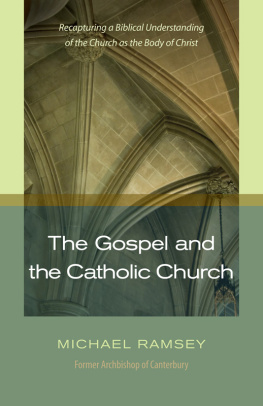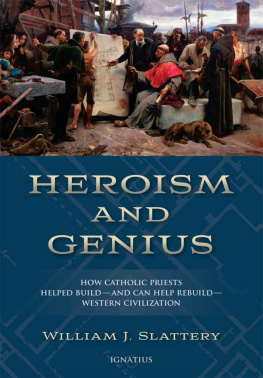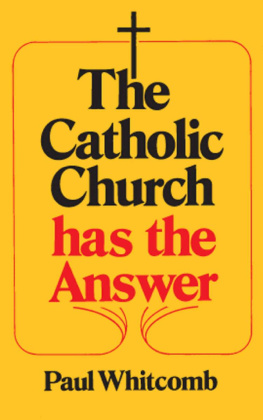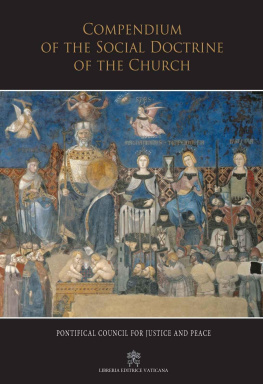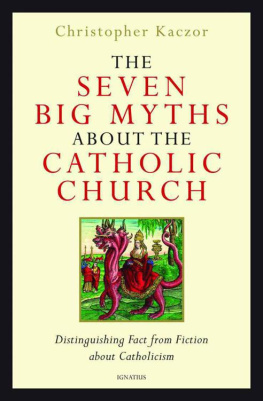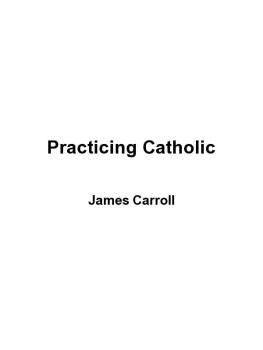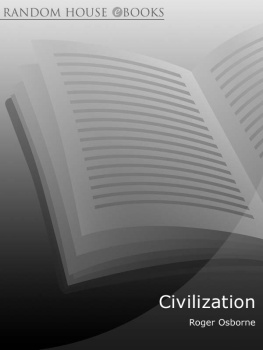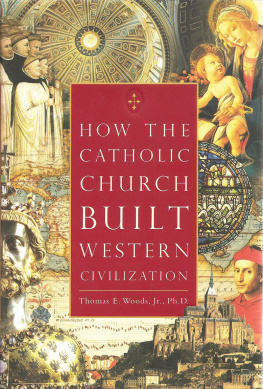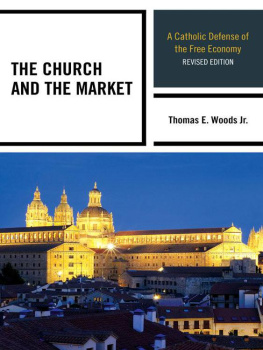Copyright 2005 by Thomas E. Woods, Jr.
All rights reserved. No part of this publication may be reproduced or transmitted in any form or by any means electronic or mechanical, including photocopy, recording, or any information storage and retrieval system now known or to be invented, without permission in writing from the publisher, except by a reviewer who wishes to quote brief passages in connection with a review written for inclusion in a magazine, newspaper, or broadcast.
Library of Congress Cataloging-in-Publication Data
Woods, Thomas E.
How the Catholic Church built Western civilization / Thomas E. Woods, Jr.
p. cm.
Includes bibliographical references and index.
ISBN 0-89526-038-7
1. Catholic ChurchInfluence. 2. Civilization, Western. 3. Christianity and culture. 4. Catholic ChurchHistory. I. Title.
BX1795.C85W66 2005
282'.09--dc22
2005007380
Published in the United States by
Regnery Publishing, Inc.
One Massachusetts Avenue, NW
Washington, DC 20001
www.regnery.com
Distributed to the trade by
National Book Network
Lanham, MD 20706
Printed on acid-free paper
Manufactured in the United States of America
10 9 8 7 6 5 4 3 2 1
Books are available in quantity for promotional or premium use. Write to Director of Special Sales, Regnery Publishing, Inc., One Massachusetts Avenue NW, Washington, DC 20001, for information on discounts and terms or call (202) 216-0600.

To our daughters, Regina and Veronica
As this book went to press we learned that
Pope John Paul II ,
pontiff of twenty-seven years,
had passed to his eternal reward.
The book is also dedicated to him,
for his heroic labors against Nazism and Communism
and on behalf of peace and innocent human life.
Contents

Chapter One
The Indispensable Church
P hilip Jenkins, distinguished professor of history and religious studies at Pennsylvania State University, has called anti-Catholicism the one remaining acceptable prejudice in America. His assessment is difficult to dispute. In our media and popular culture, little is off-limits when it comes to ridiculing or parodying the Church. My own students, to the extent that they know anything at all about the Church, are typically familiar only with alleged Church corruption, of which they heard ceaseless tales of varying credibility from their high school teachers. The story of Catholicism, as far as they know, is one of ignorance, repression, and stagnation. That Western civilization stands indebted to the Church for the university system, charitable work, international law, the sciences, important legal principles, and much else besides has not exactly been impressed upon them with terrific zeal. Western civilization owes far more to the Catholic Church than most peopleCatholics includedoften realize. The Church, in fact, built Western civilization.
Western civilization does not derive entirely from Catholicism, of course; one can scarcely deny the importance of ancient Greece and Rome or of the various Germanic tribes that succeeded the Roman Empire in the West as formative influences on our civilization. The Church repudiated none of these traditions, and in fact absorbed and learned from the best of them. What is striking, though, is how in popular culture the substantialand essentialCatholic contribution has gone relatively unnoticed.
No serious Catholic would contend that churchmen were right in every decision they made. While Catholics believe that the Church will maintain the faith in its integrity until the end of time, that spiritual guarantee in no way implies that every action of the popes and the episcopate is beyond reproach. To the contrary, Catholics distinguish between the holiness of the Church as an institution guided by the Holy Spirit and the inevitable sinful nature of men, including the men who serve the Church.
Still, recent scholarship has definitively revised in the Churchs favor some historical episodes traditionally cited as evidence of the Churchs wickedness. For example, we now know that the Inquisition was not nearly as harsh as previously portrayed, and that the number of people brought before it was far smallerby orders of magnitudethan the exaggerated accounts that were once accepted. This is not merely special pleading on the authors part, but the clearly stated conclusion of the best and most recent scholarship.1
The point is that in our present cultural milieu it is easy to forgetor not to learn in the first placejust how much our civilization owes to the Catholic Church. To be sure, most people recognize the influence of the Church in music, art, and architecture. The purpose of this book, however, is to demonstrate that the Churchs influence on Western civilization goes well beyond these areas. With the exception of scholars of medieval Europe, most people believe that the thousand years prior to the Renaissance were a time of ignorance and intellectual repression in which vigorous debate and lively intellectual exchange did not occur, and that strict conformity was ruthlessly imposed on whatever scholarly community might be said to have existed. My students can hardly be blamed for believing this; after all, it is only what they were taught in school and in American popular culture.
Even some professional authors can still be found giving credence to this view. In the course of some research I came across a 2001 book called Second Messiah by Christopher Knight and Robert Lomas. These authors paint a picture of the Catholic Church and its influence on Western civilization that could not be more wrong. They get away with it thanks to the strong prejudice against the Middle Ages, as well as an overall lack of knowledge of the period, that exists among the public. For example, we read: The establishment of the Romanised Christian era marked the beginning of the Dark Ages: the period of Western history when the lights went out on all learning, and superstition replaced knowledge. It lasted until the power of the Roman Church was undermined by the Reformation.2 Again: Everything that was good and proper was despised and all branches of human achievement were ignored in the name of Jesus Christ.3
Now, I realize that this is precisely what many readers were themselves taught in school, but there is scarcely a single historian to be found today who would view these comments with anything but amused contempt. The statements made in Second Messiah fly in the face of a century of scholarship, and Knight and Lomas, who are not trained historians, seem blissfully unaware that they are repeating tired old canards that not a single professional historian any longer believes. It must be frustrating to be a historian of medieval Europe: No matter how hard you work and how much evidence you produce to the contrary, just about everyone still believes that the entire period was intellectually and culturally barren, and that the Church bequeathed to the West nothing but repression.
Not mentioned by Knight and Lomas is that it was in Dark Age Europe that the university system, a gift of Western civilization to the world, was developed by the Catholic Church. Historians have marveled at the extent to which intellectual debate in those universities was free and unfettered. The exaltation of human reason and its capabilities, a commitment to rigorous and rational debate, a promotion of intellectual inquiry and scholarly exchangeall sponsored by the Churchprovided the framework for the Scientific Revolution, which was unique to Western civilization.
Next page

